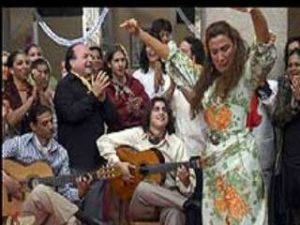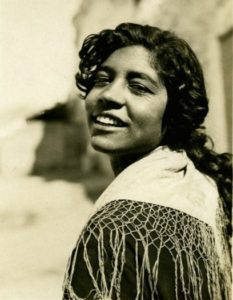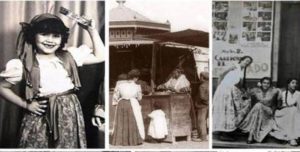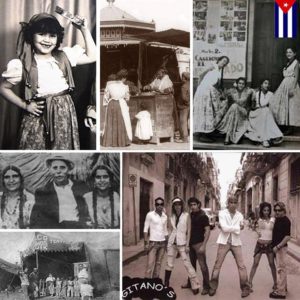 LOS GITANOS Y SUS HUELLAS EN EL “AJIACO CRIOLLO” DE NUESTRA ISLA. Photos.
LOS GITANOS Y SUS HUELLAS EN EL “AJIACO CRIOLLO” DE NUESTRA ISLA. Photos.
No es para compararla con la influencia española o africana en nuestra isla pero la emigración gitana también encontró en Cuba un sitio de asentamiento y, aun sin proponérselo, sus huellas llegan hasta nuestros días.
Acerca de la entrada de gitanos a la Isla no existen investigaciones profundas. Su presencia se remonta a los tiempos de la colonia, a pesar de que algunos estudiosos la vinculan a los colonizadores. Sobresalen opiniones de que la mayor oleada llegó a raíz de la II Guerra Mundial, cuando los nazis exterminaron en los campos de concentración a medio millón de seres, pertenecientes a esa etnia, en Europa Central.
En nuestro país las migraciones gitanas, sucedidas a comienzos del siglo XX, sufrieron menos discriminación que en otros lugares, pero no escaparon a la calamidad. Una ley cubana, dictada en 1936, prohibió su ingreso algo que constituía un verdadero crimen, en momentos que muchos de ellos huían de España, duramente perseguidos por el franquismo durante la Guerra Civil Española.
Si bien muchos arribaron a Cuba, como tránsito hacia otros países, los que se asentaron, integrándose, y sus descendientes encontraron aquí, como han expresado, un país donde podían vivir tranquilos.
Referencias del tema en nuestra literatura, en libros como “Memorias de una cubanita que nació con el siglo”, de la escritora Renée Méndez Capote, les dedica un espacio. La prensa de la época también reseñó sus refugios en los arrabales de La Habana de intramuros, en tanto los habitantes de la ciudad recibieron con cierta curiosidad a aquellos tocadores de guitarra española y sus bellas mujeres ataviadas con vestidos típicos.
Su condición de nómadas los hizo extenderse, en varias regiones del oriente cubano y de la antigua provincia de Las Villas, como artistas en el circo, vendedores en ferias y parrandas o improvisando timbiriches para la venta de mercancías elaboradas, incluso por ellos mismos.
Arista importante de ello deviene la comida, como el té de frutas o el “brazo gitano”, dulce muy gustado por los cubanos y sustituto del tradicional cake. Su música, además, influyó mucho en la andaluza y por ende en la criolla, heredera de ritmos y bailes españoles.
Sin embargo, donde mayor se hizo notar la influencia gitana fue en el habla popular. La lengua caló ha hecho de las suyas, y en el habla marginal sobran los vocablos con significados muy similares a las utilizadas a diario en esta jerga.
El español hablado en Cuba, no pudo escapar al influjo “gitano”, en el habla coloquial popular de nuestro país y que repetimos, sin darnos cuenta del origen, como sucede con andoba (fulano), barín (bueno), berro (cólera, disgusto), birlar (robar), bisnar (vender), de butén (de maravilla, de primera), coba (halago, adulación), cúmbila (compañero, amigo), curda (embriaguez, borrachera), guillarse (hacerse pasar por algo distinto de lo que se es, hacerse el tonto), jamar (comer), jarana (broma), jeta (cara), menda (yo), pargo (homosexual), pirar (marcharse, irse) entre muchísimos otros.
En la actualidad, los gitanos cubanos que quedan, escasos ya por el paso del tiempo, todavía conservan algunas de sus tradiciones. El pan hecho de huevo, el té sin falta en cada casa, las fotos, el respeto por la palabra de los mayores, la estabilidad del matrimonio, la alegría en cada cosa, el gusto por los colores vivos, los grandes aretes y hasta por las prendas de oro, son algunos de los rasgos que los caracterizan.
No en vano se confirman las palabras del etnólogo Fernando Ortiz cuando al expresar que Cuba era un ajiaco por la diversidad de razas y culturas que influyeron en la formación de su nacionalidad.
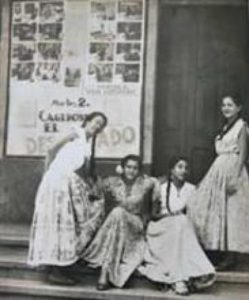 THE GYPSIES AND THEIR FOOTPRINTS IN THE “AJIACO CRIOLLO” DE NUESTRA ISLA. Photos.
THE GYPSIES AND THEIR FOOTPRINTS IN THE “AJIACO CRIOLLO” DE NUESTRA ISLA. Photos.
It is not to compare it with the Spanish or African influence on our island but the gypsy emigration also found a settlement site in Cuba and, even without trying, its tracks reach this day.
About the entrance of gypsies to the Island, there are no deep investigations. Its presence dates back to colonial times, although some scholars link it to the colonizers. Opinions stand out that the biggest wave came in the wake of World War II, when the Nazis exterminated half a million people in the concentration camps, belonging to that ethnic group, in Central Europe.
In our country, Roma migrations, which occurred at the beginning of the 20th century, suffered less discrimination than in other places, but they did not escape the calamity. A Cuban law, enacted in 1936, prohibited his entry from something that constituted a true crime, at a time when many of them fled from Spain, harshly persecuted by Franco during the Spanish Civil War.
While many arrived in Cuba, as a transit to other countries, those who settled, integrating themselves, and their descendants found here, as they have said, a country where they could live peacefully.
References of the subject in our literature, in books like “Memories of a Cuban born with the century”, by the writer Renée Méndez Capote, dedicate a space to them. The press of the time also reviewed their shelters in the suburbs of Havana in Intramuros, while the inhabitants of the city received some curiosity about those Spanish guitar players and their beautiful women dressed in typical dresses.
Their status as nomads made them spread, in various regions of eastern Cuba and the former province of Las Villas, as artists in the circus, vendors at fairs and parrandas or improvising timbiriches for the sale of processed goods, even by themselves.
An important aspect of this becomes food, such as fruit tea or the “gypsy arm”, a sweet treat very much liked by Cubans and a substitute for the traditional cake. His music, in addition, greatly influenced the Andalusian and therefore the Creole, heiress of Spanish rhythms and dances.
However, where the gypsy influence was most noticeable was in popular speech. The Caló language has made its own, and in the marginal speech there are plenty of words with very similar meanings to those used daily in this jargon.
The Spanish spoken in Cuba, could not escape the “gypsy” influence, in the popular colloquial speech of our country and that we repeat, without realizing the origin, as happens with Andoba (Fulano), Barin (well), Watercress (cholera, disgust), swiping (stealing), bisnar (selling), of butén (marvelous, first class), coba (flattery, flattery), cucumber (companion, friend), Kurdish (drunkenness, drunkenness), guillarse (impersonating something different from what one is, playing dumb), jamar (eating), jarana (joke), jeta (face), menda (me), snapper (homosexual), pyrar (leaving, leaving) among many others.
At present, the remaining Cuban gypsies, scarce by the passage of time, still retain some of their traditions. The bread made of egg, the tea without fail in each house, the photos, the respect for the word of the elders, the stability of the marriage, the joy in each thing, the taste for the bright colors, the great earrings and even for Gold garments are some of the features that characterize them.
It is not in vain that the words of the ethnologist Fernando Ortiz are confirmed when in expressing that Cuba was an ajiaco due to the diversity of races and cultures that influenced the formation of its nationality.
Agencies/ RHC/ Guadalupe Yaujar/ Extractos/ Excerpts/ Internet Photos/ Arnoldo Varona/ www.TheCubanHistory.com
THE CUBAN HISTORY, HOLLYWOOD.



